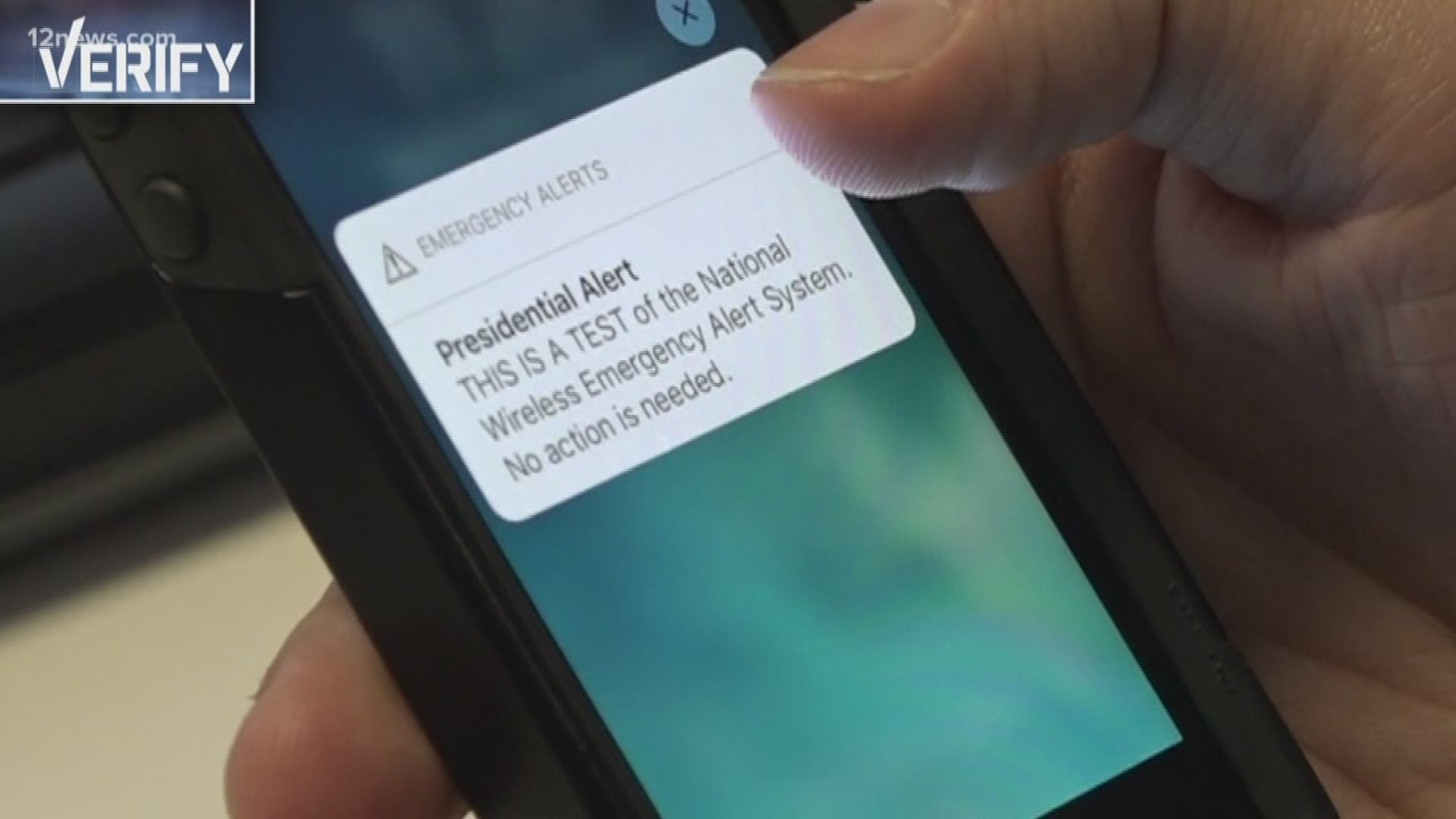PHOENIX – There were a lot of theories going about the first presidential Wireless Emergency Alert (WEA) on Wednesday.
Many Arizonans got the alert at 11:18 Wednesday morning.
In a video put out by the Federal Emergency Management Agency (FEMA), administrator, Brock Long explained, “For the first time in our nation’s history, a wireless emergency alert test message will be sent to compatible cell phones.”
One of our Call 12 for Action volunteers, Roy, pointed out he “didn’t get it,” as he held up his flip phone.
FEMA and the Federal Communications Commission (FCC) were behind the presidential alert, to make sure they’re ready to send out critical messages in the event of a national emergency.
In a real scenario, the president or his designee would make the call, then FEMA would activate it.
Cell phone users can opt out of getting wireless alerts thanks to the Warning, Alert, and Response Network (WARN) Act of 2006, unless it comes from the president.
These presidential alerts aren’t a new concept. The president has had access to the Emergency Alert System (EAS)—that’s the one you see crawl across your TV screen or hear over the radio—since 1934, through the War Powers Act provision of the Communications Act of 1934. The Act allowed the president access to commercial communications during “a state of public peril or disaster or other national emergency.”
Before Wednesday’s alert, we had seen the EAS tested at a national level three times since 2011.
Wednesday’s presidential alert test was originally planned for Sept. 20, but it was postponed because of response efforts to Hurricane Florence.

